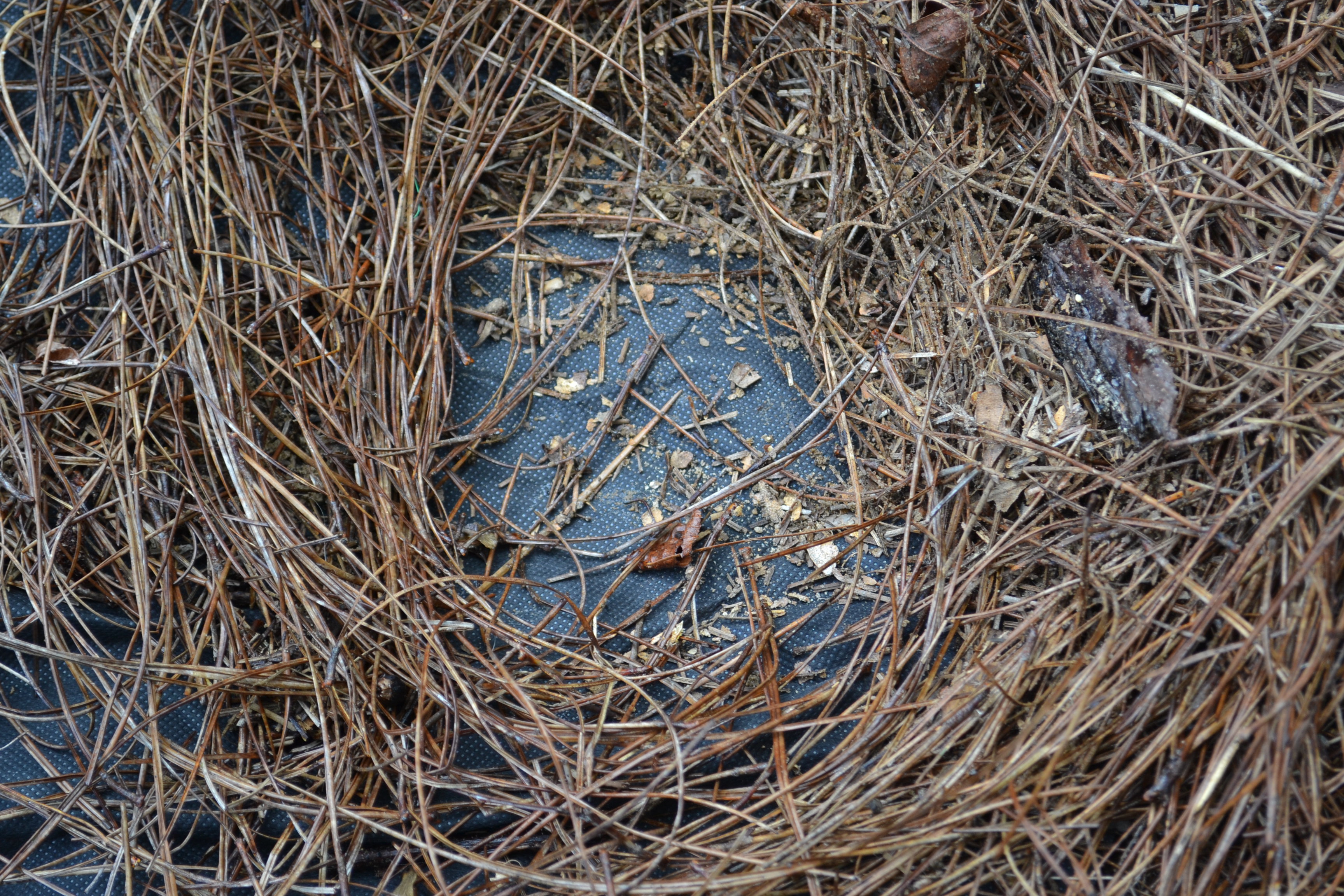
by Beth Bolles | Aug 12, 2016
Homeowners and horticulture professionals spend time to develop an attractive ornamental bed only to have weeds take over months or a few years later. One common method in the attempt to prevent weeds is to apply a landscape fabric around plants in beds and place a layer of mulch on top to dress it up. The thought is that this barrier on top of the soil will prevent a large number of weeds from emerging. The fabric physically prevents the growth of weeds form the soil below and blocks sunlight from reaching weed seeds. Available fabrics are labeled as porous to allow air and water to move through them and reach ornamental plant roots.
On paper, landscape fabric sounds like a good idea and it may work for a little while. Over time, soil particles and decomposing mulch fill up the porous spaces in the fabric which prevent air and water from reaching plant roots. Even with irrigation or routine rainfall, plant roots often do not receive the needed water and air for healthy growth. Plants may respond by trying to send roots through fabric seams which breaks down the intended weed barrier. Other plants slowly decline or may die quickly due to water stress or lack of sufficient air movement into the soil.
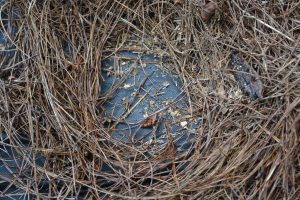
Fabric may initially prevent some weeds but it can also prevent air and water movement. Photo by Beth Bolles, UF Extension Escambia County
Weed seeds also find their way into the mulch that is on top of the fabric from nearby lawns and landscapes. The next thing you know, you have an entire weed crop growing in the mulch on top of your landscape fabric. Perennial weeds such as torpedograss and purple nutsedge eventually grow through fabrics.
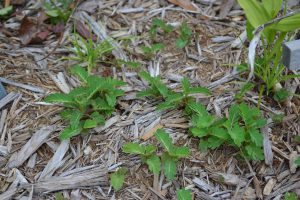
Seeds from annuals like Chamberbitter easily get into mulch from surrounding areas and grow on top of fabrics. Photo by Beth Bolles, UF Extension Escambia County
The best place to consider fabric if you want to install it in the landscape is under mulched paths or other areas without ornamental plantings where a synthetic groundcover is needed. In order to have a healthy root environment for your ornamental bed plants, it is best to keep landscape fabric out of these areas.
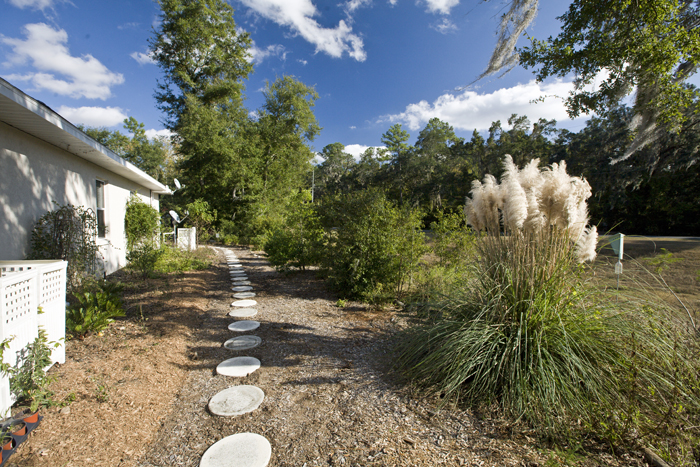
by Carrie Stevenson | Jul 19, 2016

Florida home and yard. Home, house, stone pavers, walkway, yard, landscaping. UF/IFAS Photo: Tyler Jones
Dr. Ramon Leon, Extension Weed Specialist, West Florida REC, Jay
Last year the International Agency for Research on Cancer (IARC) of the World Health Organization (WHO) classified glyphosate as “probably carcinogenic to humans.” This generated a lot of controversy because the Environmental Protection Agency (EPA), the European Food Safety Authority, and recently a joint report between the Food and Agriculture Organization (FAO) and WHO concluded that glyphosate is unlikely to be carcinogenic in humans.
As a University of Florida/IFAS Weed Specialist, I have been receiving multiple phone calls and e-mails from homeowners, homeowner associations (HOA), lawn care companies and contractors, municipalities, and county managers requesting a list of herbicides that are “safer” than glyphosate. When I ask them the reason for this particular preference, all of them acknowledged that their concern originated from hearing about the IARC report.
The first point that I always explain to people concerned about this issue is that most of the scientific evidence indicates that glyphosate does not have a higher carcinogenic risk compared to many other substances that they are normally exposed to in their daily activities. The second point is that it is important to continuously monitor how chemicals we use affect our health and the environment in the long run. The IARC report is a reminder that we should keep a close eye on glyphosate, the most widely used herbicide in the world, but it is not necessarily a call to stop using it, because at this point there is no direct evidence that it causes cancer in humans.
Very frequently, regardless of the technical details, many homeowners and citizens in urban areas are considering not using glyphosate in their gardens and landscapes, and they would like to use “safer” herbicides.
What do you mean by “safer?”
If you mean lower risk as a carcinogen, then most herbicides registered for use in urban areas would be acceptable because none of them are considered “probably carcinogenic” by IARC or any other regulatory agency. Therefore, you have multiple options to choose from. However, many of the conversations have lead to the statement, “No, I want something that is less toxic than glyphosate!”
Toxicity in pesticides is predominantly assessed using the lethal dose 50 (LD50), which indicates the amount of a chemical that kills 50% of a reference population of test animals (e.g. mice, rabbits, rats). When the LD50 is high, this means that the chemical has low toxicity, and when the LD50 is low it is considered that toxicity is higher because small amounts of the chemical can cause mortality. Glyphosate has one of the highest LD50s for herbicides. In other words, glyphosate is one of the least toxic herbicides available based on the LD50 standard. Therefore, if we want an alternative herbicide that is less toxic, we do not have any options for urban areas.
What about organic herbicides?
Many people associate “organic” with “safer.” This can be misleading because it depends on how safety is measured. For example, there are multiple organic herbicides that are considered to have the same or even higher toxicity when compared with glyphosate, because many of them have irritant and corrosive properties. Furthermore, organic herbicides have dramatically different herbicidal properties that make them unlikely alternatives to effectively replace glyphosate.
Glyphosate has one of the broadest spectrums of control, so it kills many different weed species effectively. Also, glyphosate works systemically. This means that it is absorbed by leaves and then moves inside the plant to growing points, roots, and other propagating structures. This systemic effect increases the ability to kill relatively large plants. In contrast, the majority of organic herbicides have a contact effect, so they only kill the tissue they touch without being able to move inside the plant. Therefore, they are effective at killing very small plants (<2 inches tall). Large plants can suffer leaf burning after treatment with organic herbicides, and if the application is done properly, the user will see a lot of control shortly after the application (Fig. 1). However, the plants will soon recover and the control level will decrease because, unlike plants treated with systemic herbicides, they can produce new growth from tissues that were not directly expose to the herbicide.
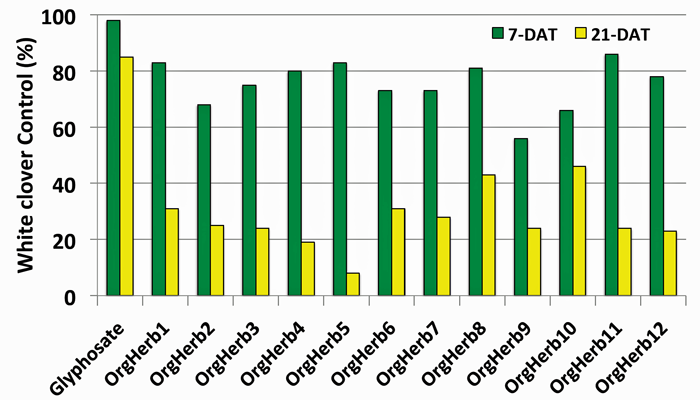
Figure 1. White clover (4 inches tall) control after treatment with glyphosate and twelve different organic herbicides based on natural oil extracts from plants. The green bars represent the level of control 7 days after treatment (DAT) and the yellow bars indicate control 21 DAT.
Considering the lack of alternatives to replace glyphosate, if you want to stop using this herbicide, and you do not want to use any other synthetic herbicides, because their toxicity might be higher, then you need to recognize that weed management will be more challenging. It is unfair to ask lawn care companies or members of HOAs to stop using the tools they have to control weeds and yet expect “weed free” lawns, gardens, and landscapes. Controlling weeds in these scenarios without glyphosate and other synthetic herbicides will require more intensive use of mechanical control approaches and hand weeding. Also, if relying on organic herbicides, these herbicides will have to be frequently applied (probably once or twice a week) in order to kill the weeds at the right time (before they get too big). Also, all these activities will increase weed control costs and the results will likely be not as satisfactory. Thus, you might end up paying more to have lawns and landscapes that will have more weeds escaping control. If this is not acceptable to you, then you probably should be more open to consider the weed control tools we have available. Also, you should be more vigilant about what are the appropriate ways to use them to minimize their risks to humans and the environment, while obtaining the benefits that you are seeking. Otherwise, you should get used to seeing more weeds in the landscape, and to be fair… this might not be as bad as some people think.
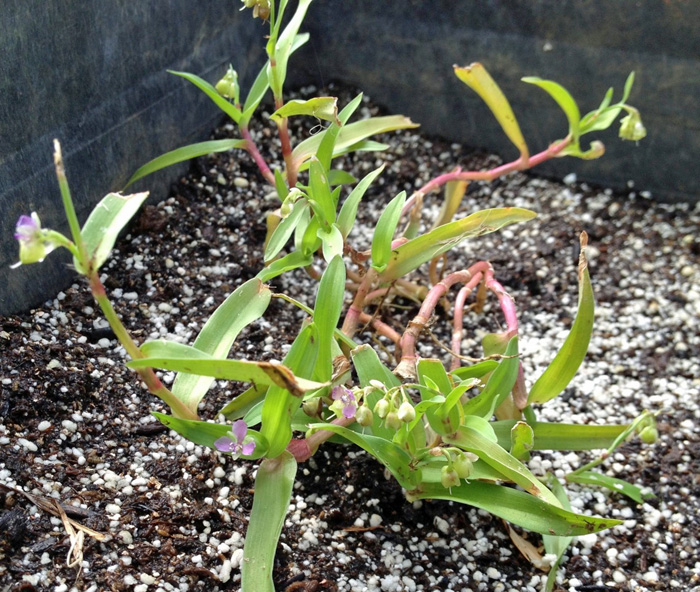
by Carrie Stevenson | Dec 4, 2015
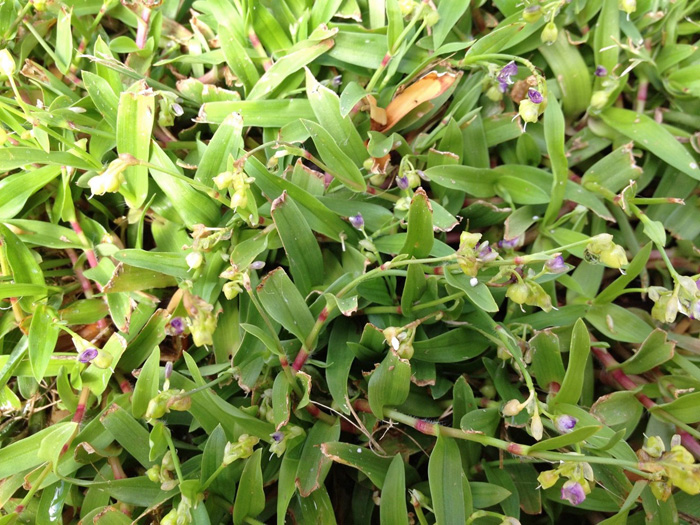
______________________Figure 1. Doveweed patch in St. Augustinegrass sod.__________________________
Ramon Leon, WFREC Weed Specialist
Doveweed (Murdannia nudiflora) is a summer annual weed species that belongs to the dayflower family. Over the last three years, this weed has become an important weed problem in residential lawns and sod production.
This weed has two key characteristics that make it successful. First, its seeds germinate late during the spring when soil temperatures reach 65-70°F. This represents a problem because at this time the effect of preemergence (PRE) herbicides applied in February or March might be too low to provide good doveweed control. Second, the leaves of this weed can be confused with St. Augustinegrass and centipedegrass leaves, and many people do not notice doveweed until the plants are large and are displacing the turf. Doveweed leaves are thick with a shiny rubbery texture. The plant produces creeping stems (stolons), and mowers can break these stolons spreading this weed across the field.
It is very important to keep in mind that doveweed prefers wet areas, so drainage issues or over-watering will favor the establishment and growth of this weed. For this reason, ensuring irrigation is not excessive is a key management practice to control this problem. Another cultural practice that plays a major role on doveweed management is mowing. Mowing too short and too frequently will favor doveweed because its leaves will grow horizontally avoiding the mower blades. Chose a mowing height that allows good ground cover , yet only removes a third of the turf leaf blades.

___________Figure 2. Individual doveweed plant showing flowers, fruits, and stolons with root in nodes.________
Control
Doveweed is easier to control before emergence than when plants are well established. Atrazine is one of the most effective herbicides to control doveweed. A maximum rate of 1 lb. of active ingredient (ai) per acre (A) and no more than 2 lb. ai per year are recommended to achieve both adequate control and avoid turfgrass injury. Atrazine should be applied right before or soon after doveweed emerges to maximize control.
For PRE control, S-metolachlor (Pennant Magnum™), dimethenamid-P (Tower™), and indaziflam (Specticle™) are herbicides that can considerably reduce doveweed establishment, especially if the application is done closer to doveweed emergence timing. These herbicides also provide good control of other important weed species such as crabgrass and goosegrass, which emerge earlier in the spring. In order to control early emerging weeds and doveweed, split applications are preferred. For example, the first application is done at the end of February or early March and the second one 4 to 6 weeks after. In this way, we can extend PRE control until doveweed starts emerging.
If we observe doveweed emerging after PRE applications, we have several postemergence (POST) herbicides that will provide control, as long as the plants are less than 2 inches in size and have not produced stolons. Products containing 2,4-D and dicamba can provide fair control of doveweed. However, repeated applications or applications in combination with other herbicides will be required for adequate control. There are commercial products with formulations that combine 2,4-D or dicamba with other herbicides such as mecoprop-p, carfentrazone (Quicksilver™), thiencarbazone and iodosulfuron (e.g., Celsius™, Tribute Total™). This type of three− or four−way combination can provide enhanced doveweed control. If doveweed has fully displaced the turf in spots, it is probably easier and more effective to kill doveweed with a directed application of glyphosate (RoundUp™) and re-seed or re-sod the area.
Because doveweed seeds can live for several years in the soil, it will take two to three years of continuoous control to eliminate doveweed populations. Although herbicides are useful tools to control doveweed, the most important factor to prevent doveweed problems is to have vigorous healthy turf. Doveweed requires a lot of sunlight, so if the turf effectively shades the ground, doveweed will have a hard time growing and producing new seed.
For more information on managing turf weeds download:
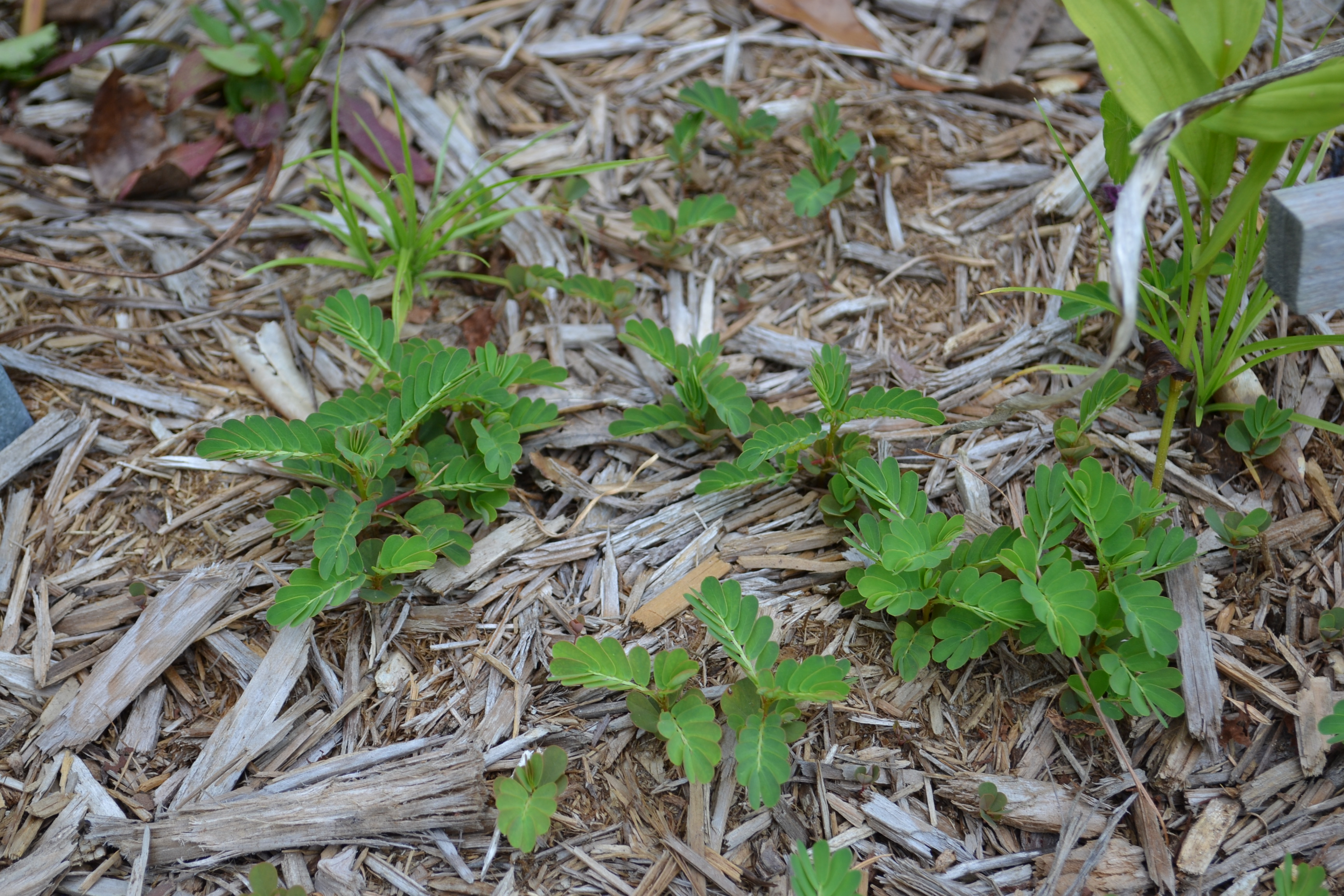
by Beth Bolles | Sep 16, 2015
Just when you think your battle against weeds is over for the summer, cooler nighttime temperatures and shorter days spark the beginning of a new crop of your least favorite plants. The question of many homeowners is: how did all the weeds get into my landscape?
There are many ways that weeds make it to the landscape. They can be brought in with new soil, mulch, container plants, dropped by birds, delivered on the fur of animals, carried by wind, or on the deck of a lawn mower. If that is not enough to depress you, then also realize that regardless of outside sources of weeds, your landscape already has plenty onsite that you don’t even know about.
In the soil, there is a large number of weed seeds ready to germinate when the conditions are just right. Understanding how your common landscape practices can encourage or discourage the germination of these seeds, can help you begin to manage some weed infestations.
Many of the seeds of common annual weeds are very small. They require exposure to sunlight in addition to the proper temperatures and moisture to germinate. Sunlight is critical, though, and seeds will not germinate without adequate sunlight. If the small seeds are deep in the soil, you will probably never know they are there. When you turn soil or disturb soil such as when installing plants, you bring the small seeds close to the surface and closer to light. They can then be stimulated to germinate. The next thing you know, you have an area covered in weed seedlings.

As mulch thins, small seeds of weeds are stimulated by sunlight to begin growing.
What does this mean for your gardening practices? Try your best to block sunlight from hitting exposed soil. You can do this by keeping a healthy turf, free of thinning spaces. A 2 to 3 inch layer of mulch in plant beds and vegetable gardens will reduce weed seed germination. Finally, when you are installing plants in an established bed, try not to mix soil with surrounding mulch. Seeds will easily germinate within the mulch if it becomes mixed with soil.
It is inevitable that your landscape will have some weeds but a few easy gardening practices can reduce some of your weed frustrations.
For more information:
Gardening Solutions: Weeds and Invasive Plants
Improving Weed Control in Landscape Planting Beds
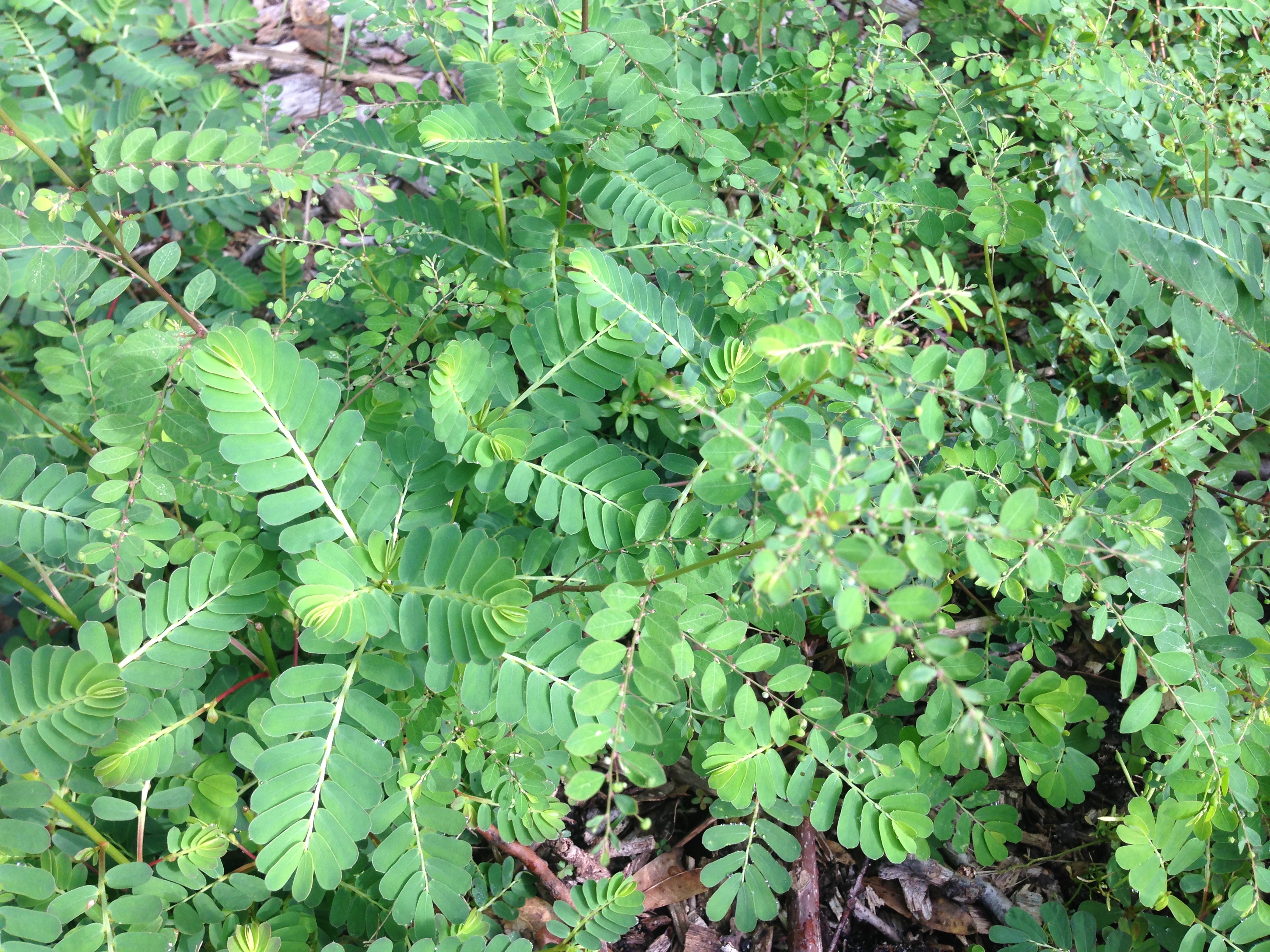
by Les Harrison | Aug 11, 2015
Weeds are growing everywhere, especially in manicured lawns and landscapes despite the best efforts of owners who have spared no expense to remove the offending flora. Herbicides to control the weeds seem to be less effective as August progresses.
The reality, at least about the herbicides, is different from perceived appearances. Herbicides can be a wonderful tool for the homeowner, if applied properly.
[important]The first point to remember about herbicides is to always, Always, ALWAYS apply them as instructed by the label directions. The oft quoted mantra of “the label is the law” is accurate.[/important]
Herbicides and their labeling are periodically reviewed and assessed to confirm effectiveness against target weeds without damaging the environment. Not following the label directions can have many negative implications for both the environment and the applicator.
Herbicides are either selective or non-selective when killing plants. Non-selective herbicides kill or damage every plant, but selective herbicides target a narrower range of plants.
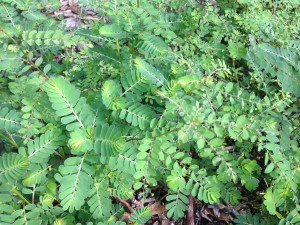
Chamberbitter, a common annual weed. Photo credit: Mary Derrick, UF/IFAS Extension.
Never apply herbicides when there is a breeze or wind. Herbicide drift can injure or destroy plants that are not the intended target.
High temperatures can contribute to the drift problem by volatizing some of the herbicide spray. Even the lightest air movement will cause drift off the target weeds when this condition exists. Herbicide drift can also be deposited in ponds and streams, harming the aquatic creatures that live there. Some herbicides are toxic to fish, insects and other animals that can be killed by tiny amounts of the active chemical. Additionally, the off target herbicides can kill aquatic plants. When the dead plants decay, they deplete the water of oxygen, again threatening or ending the life of the water’s residents.
Rain or dew resulting from high humidity can negate a herbicide’s application. If a leaf is wet, most or all the herbicide will run off on to the soil where it can leach into the water table.
Unless stated on the label, herbicides work only when the plant is actively growing. A hot, dry week or two can put a plant in drought mode, suspending growth and the herbicide’s effectiveness.
Many weeds have already produced seeds for next spring. Herbicides applied now will not affect the germination of that seed months from now.
The most effective strategy is to mow weeds before they set seed or to collect and destroy those which have already produced seed. Even with 100 percent success at eliminating this year’s weed seed crop, there will be weeds next year.
Some weed seed remain in the soil, sometimes for decades, only to germinate when conditions are perfect for their sprouting. Sickle pod and crotalaria are local examples of long term seed vigor.
Other seed can blow in or be dropped by wild or domestic animals passing through the property. A pre-emergent herbicide which stops germination can help control these latent invaders.
For more information:
Weed Management Guide for Florida Lawns
Gardening Solutions: Weeds











